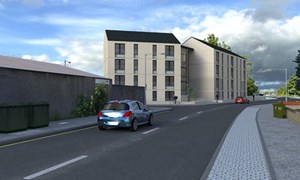 Community Planning West Dunbartonshire has produced its response to the Community Empowerment Act (Scotland) 2015.
Community Planning West Dunbartonshire has produced its response to the Community Empowerment Act (Scotland) 2015.
The Scottish Government is consulting on the guidance and regulations associated with the Act.
Each set of draft regulations and guidance is specific to a section of the Act. (i)Asset Transfer draft regulations; (ii) participation draft regulations; (iii)community planning guidance; and (iv) regulations and land reform as impacted on by the Community Empowerment Act.
A copy of the Community Planning West Dunbartonshire response to the Community Empowerment Act is set out below:
Part 2 – Community Planning
General Questions
Are there any equality issues we should be aware of in respect of local outcomes improvement plans and locality plans?
Do you agree with the principles for effective community planning? Is anything missing?
Do you think there are common short- or medium-term performance expectations which every CPP and partner should be expected to meet? If so, what are they?
All partners agree with the overarching principles for effective community planning. However, there is also agreement that any guidance and regulations should not be too prescriptive. In line with the spirit of the legislation, there is a desire for as much as possible to be left to local discretion – reflective the overall empowerment agenda.
There is a concern locally, expressed with most clarity by colleagues in the Health and Social Care Partnership (HSCP) that this legislation does not align to the Joint bodies Act in relation to the links with general practitioners/ clinicians and the terminology around localities. This may cause difficulties locally in a number of partnerships as it causes confusion and conflict with the existing legislation.
In practical terms, there are ongoing difficulties across community planning partnerships about how best to approach the challenges of evidencing the approach to joint resourcing. The shift in focus from where the money is spent / located to what is delivered on is welcomed, focusing on assets employees etc. rather than just the financial investment of partners.
While it I helpful to have common measures to allow sharing of best practice and review of performance, it is felt that prescribing common performance expectations and targets weakens the ‘local’ element of this approach. The use of the community planning outcomes profiles prepared by Improvement Service allows for sharing of innovative approaches in a ‘benchmarking’ type discussion without setting hard targets for local issues.
Timescales
Do you think the statutory guidance should require CPPs to review and if necessary revise their plans after a specific period of time in every case?
How soon after year end should CPPs publish progress reports on their local outcomes improvement plans and locality plans? (options are 4 months, 6 months or other)
It is felt that a regular reporting and review period for Local Outcome Improvement Plans would be welcome. As with the new legislation of the Community Justice Act, it would be realistic to expect a review and update of local plans in a 5-year cycle, or more often if locally determined.
A realistic reporting timescale for year-end reporting would be no later than 6 months after the end of year being reported. This would fit with existing reporting cycles locally and other arrangements.
Localities
The proposal is that only a maximum population permissible for a locality is prescribed – do you agree and what are your reasons?
The proposed maximum is 30,000 residents, with a possible exception to designate a local authority electoral ward as a locality even where its population exceeds 30,000 residents. Would this prevent a CPP from applying a reasonable approach to locality planning? Would reducing the maximum size have an impact?
Again there are issues in relation to the existing Joint Bodies legislation – which clearly defines localities. Further legislation should not be defining localities in contradiction to this, particularly as HSCPs will be a key partner in delivering the Community Empowerment Act.
If terminology is changed to reflect that CPPs are working in communities/ neighbourhoods rather than localities that would allow a more comprehensive local approach to be taken.
While we agree that working with communities neighbourhoods to develop specific ‘locality’ plans to address local issues requires these communities / neighbourhoods to be a size that people recognise we feel that this will be dependent on a range of factors. A maximum size may be helpful as long as it is not prescriptive – allowing CPPs to work in much smaller geographies where this makes most local sense. We also feel it is important to note here the pressure that working in small localities may present a significant challenge for national partners.
Part 3 – Draft Participation Requests
General Questions
Should there be a standard format for participation requests?
What information would be needed to consider participation requests?
Is it reasonable to expect public authorities to respond to requests within 14 days?
How should the use of PRs be promoted and supported?
What would need to be considered when assessing PRs and how long should this take?
Community Planning West Dunbartonshire feels it would be necessary to have standard format and process for participation request to allow these to be appropriately managed and responded to. There would be a need in each CPP to agree on how these requests would be managed for the partnership – centrally to individually by the partner agency.
A standard format for requests would allow a core set of information to be gathered, however, the feeling locally is that the example form requires to be enhanced to be more useful locally. While all agree that there needs to be a standard timescale for responses to requests that 14 days is too tight. The suggestion locally is that this is in line with the complaints and FOI process times of 20 days.
Requests should be promoted in the same way as other engagement and involvement opportunities via websites and social media. This would be supported by local partnership working with community organisations. Our local approach to engagement and involvement should ensure that local groups and organisations are involved in delivering improved outcomes as standard.
Part 5 – Asset Transfer
Asset register
What should and shouldn’t be included in the register?
How should it be published?
What information should community bodies be able to request when looking at asset transfer?
All partners locally feel that all assets, including land, should be published on the register and felt that this should already be in place. The register should be available on the community planning website and individual agency websites as well as available as a hard copy in libraries and key buildings.
In order to support community organisations when approached, an asset transfer the register should contain information about the liabilities and condition of each entry, as well as details of the likely operational costs of running the asset.
Community organisations when applying for an asset transfer should be required to evidence the sustainability and resilience of their business plan for the use of the asset. There is also a need to evidence the benefit this will provide to the local community and the outcomes being focused on through the business plan.
Review and Appeal
Should Scottish ministers appoint independent review panels?
Is 6 months a reasonable period to make a decision on a review?
There is consensus locally that there is a need for an independent review process for the asset transfer approach, and that a 6-month timescale for review is appropriate. However, there is a view locally that this process should be linked to the role of the ombudsman rather than a new process/ body being established at additional expense to the public purse.
Notes:
- The Community Empowerment (Scotland) Bill was passed on 17 June 2015.
- The intent of the Community Empowerment (Scotland) Act is to strengthen civic participation and the community voice.
- This complements West Dunbartonshire Council strategic priorities and Community Planning priority outcomes.
- The Scottish Government is consulting on various aspects of the Community Empowerment Act.
- Consultations will close on the 20th June, other than the community planning specific consultation which closes on the 13th June.
- Guidance and regulations are being prepared on each part of the Act and consultations have been launched.
https://consult.scotland.gov.uk/community-land-team/abandoned-land
https://consult.scotland.gov.uk/community-empowerment-unit/asset-transfer-procedures
https://consult.scotland.gov.uk/community-empowerment-unit/participation-request-regulations
https://consult.scotland.gov.uk/community-empowerment-unit/community-planning-guidance
 Twenty new flats for elderly and disabled residents in Clydebank have been given the go ahead.
Twenty new flats for elderly and disabled residents in Clydebank have been given the go ahead.



























































